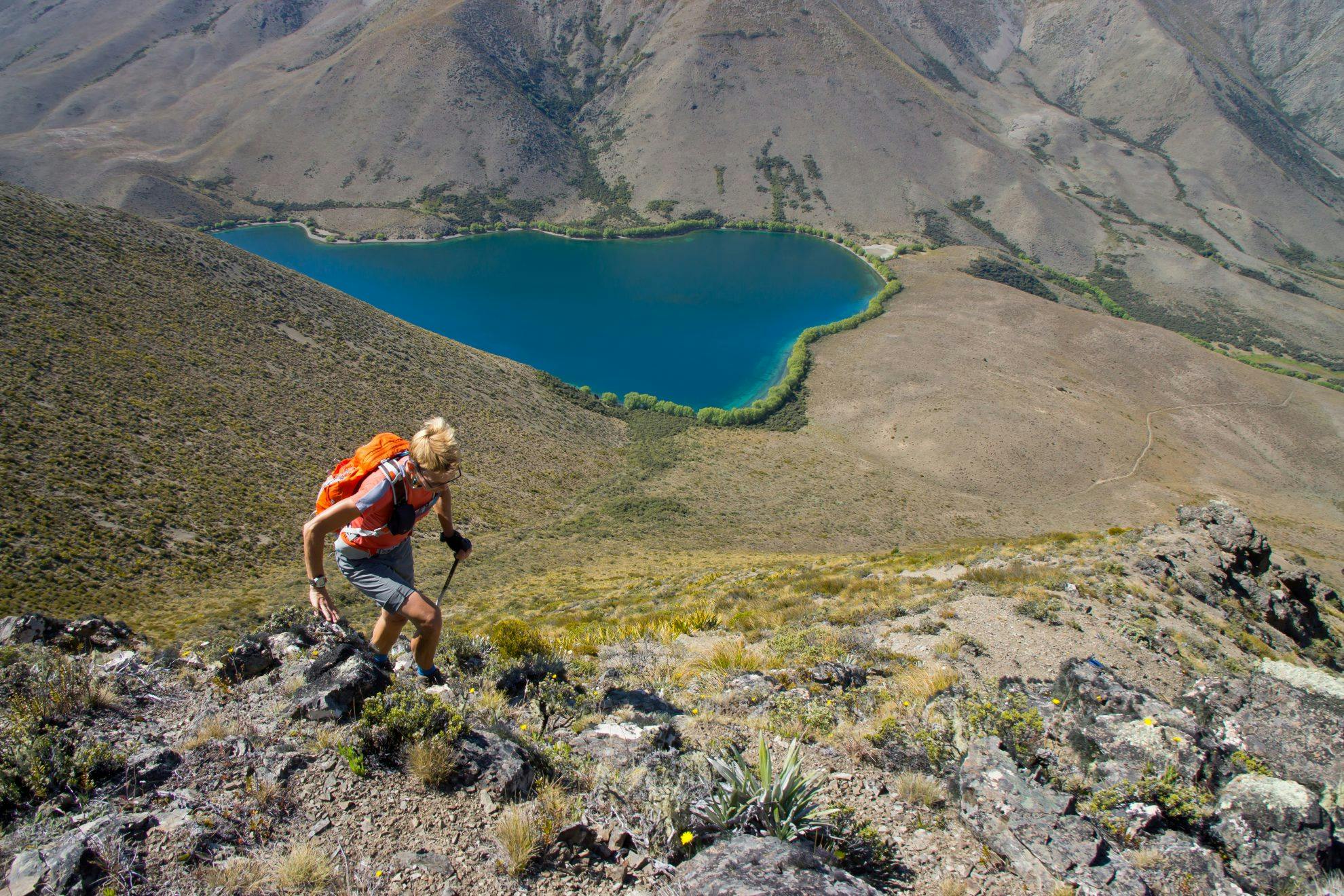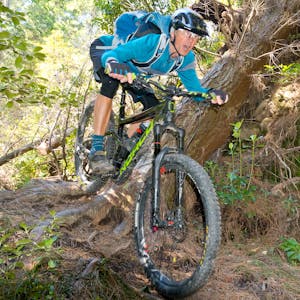As DOC considers the future of Molesworth Station, Dave Mitchell recalls the time he spent Christmas mountain biking and tramping on this huge working farm
If Molesworth Station was a country, it would be twice the size of Hong Kong and almost as large as Luxembourg. With a total population well below 100 humans, on a good day, and around 10,000 head of cattle, 80 horses and 45 dogs, the term sparsely-populated would be an understatement.
This was not always the case: it once carried around 95,000 sheep by design and millions of rabbits by misfortune. Severe erosion from overgrazing by both rabbits and sheep, along with repeated tussock burning, caused environmental collapse in the 1940s. Good farm management since then has seen the property thrive, and make room for recreation. The station has been divided into four zones, three are freely open to the public at varying times of the year and the forth by permit-only, which can be easily applied for online.
There is a rugged tramping route into Lake McRae from the Historic Molesworth Cottage going over Robinson Saddle, but we were keen to bike in, base ourselves at Lake McRae Hut and do a series of day tramps.
The day of departure arrived – Christmas Eve – and all through the land, a long spell of fine hot weather prevailed. A well-trodden 4WD track took us past Guide Hut and up the Guide River. Some of the huts on the station are stocked up and reserved for farm use only, but there are plenty of others dotted along the popular tramping routes. Big black Angus cattle roamed the lush green valley flats, whilst taking a fleeting interest in the alien intruders on their heavily-laden mountain bikes.
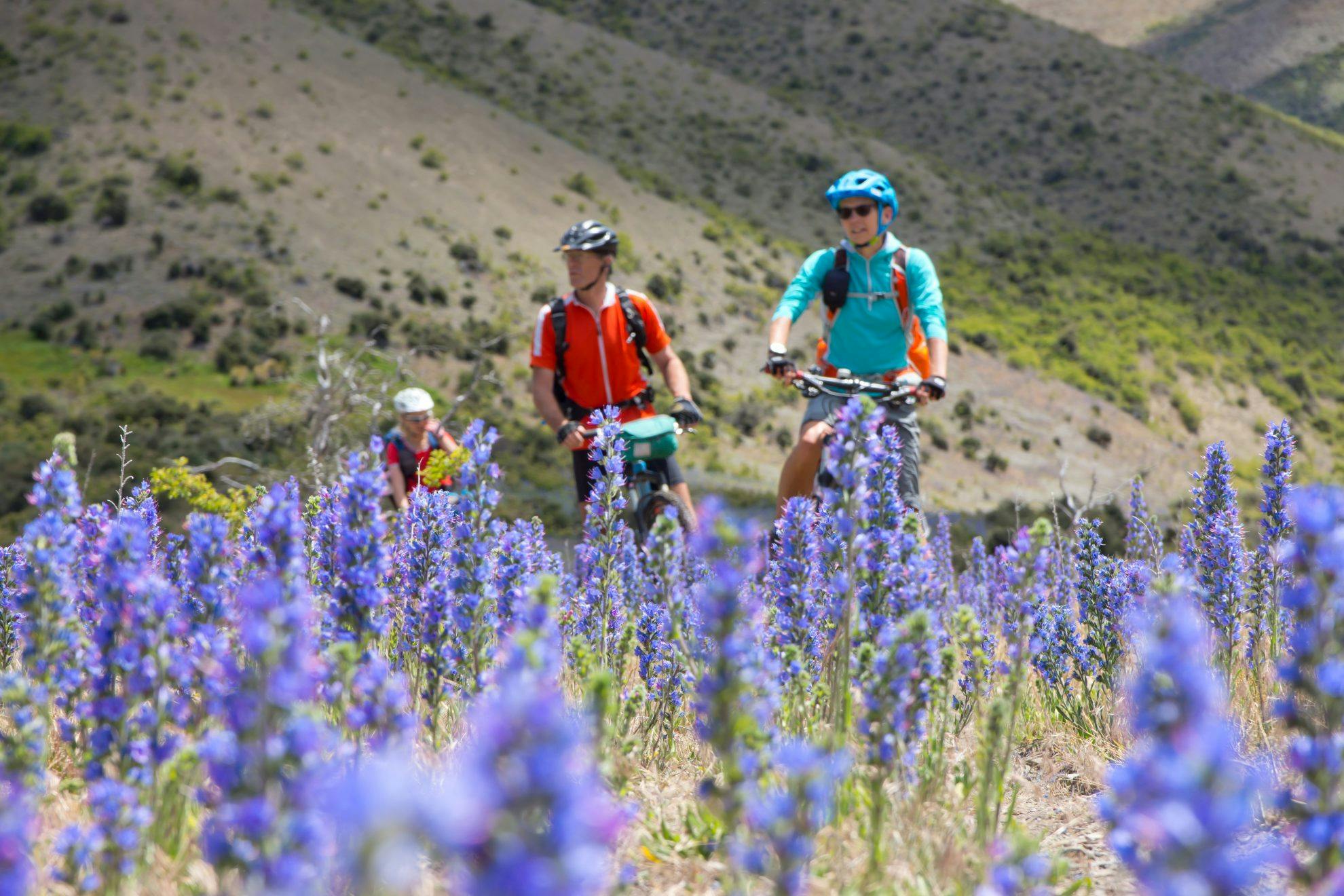
A short, steep climb took us over a barren ridge away from Guide River and into Half Moon Stream. The track continued unabated to corrugated Half Moon Hut, where the well worn a all but ends. From there, we picked up the original dozer track that once upon a time travelled unbroken to Lake McRae and beyond. Substantial sections still remain, but a bit of joining up the dots is still required where the river and slips have taken their toll. In front of us, a sea of rosehip and matagouri prevailed.
Where Half Moon Stream joins Dillon River, we headed upstream, remembering from a previous trip a few years earlier to ignore all side streams and to keep an eye on the map. The prominent north-west face of Dillon Cone is plain to see amongst the barren scree ridges and foothills of this dry and desolate, but beautiful, corner of the Molesworth. Rosehip and blue-borrage rose out of the hieracium but the river flats were green and lush. We spooked a couple of pigs in a muddy water channel and they were followed up the hill by a litter of piglets grunting and squealing.
After a long climb, we finally left Dillon River, which by now had become no more than a trickle, and made our way onto Carters Saddle and the highest point of the ride. A long ridge invited us to the top of Dillon Cone and we pencilled it in as a possible side trip on the way back. Lunch was enjoyed by a couple of historic 44-gallon drums while lapping up the first blue sliver of Lake McRae. We descended Carters Saddle over an old the slip, then down the rough and ready dozer track to the Tweed Valley. A large pocket of native bush has survived the pre-1950s burn-offs, with totara, kanuka, lacebark and a bit of beech above a host of smaller species.
Very little of the dozer track remains in the lower valley, but a great network of cattle-built singletrack led all the way to the lake. We had a ball, crisscrossing the river and dodging rosehip and matagouri. Lake McRae Hut sat hidden amongst a hedgerow of willows, just above a subterranean outlet from the lake itself. A row of working dog accommodation preceded the human equivalent, with their red corrugated tin roofs shining in the afternoon sun. The hut had been extended and upgraded since our last visit with stainless steel benches, double glazing, a new log burner and six comfy bunks. We made ourselves at home, then made plans for our Christmas day epic and evening feast.
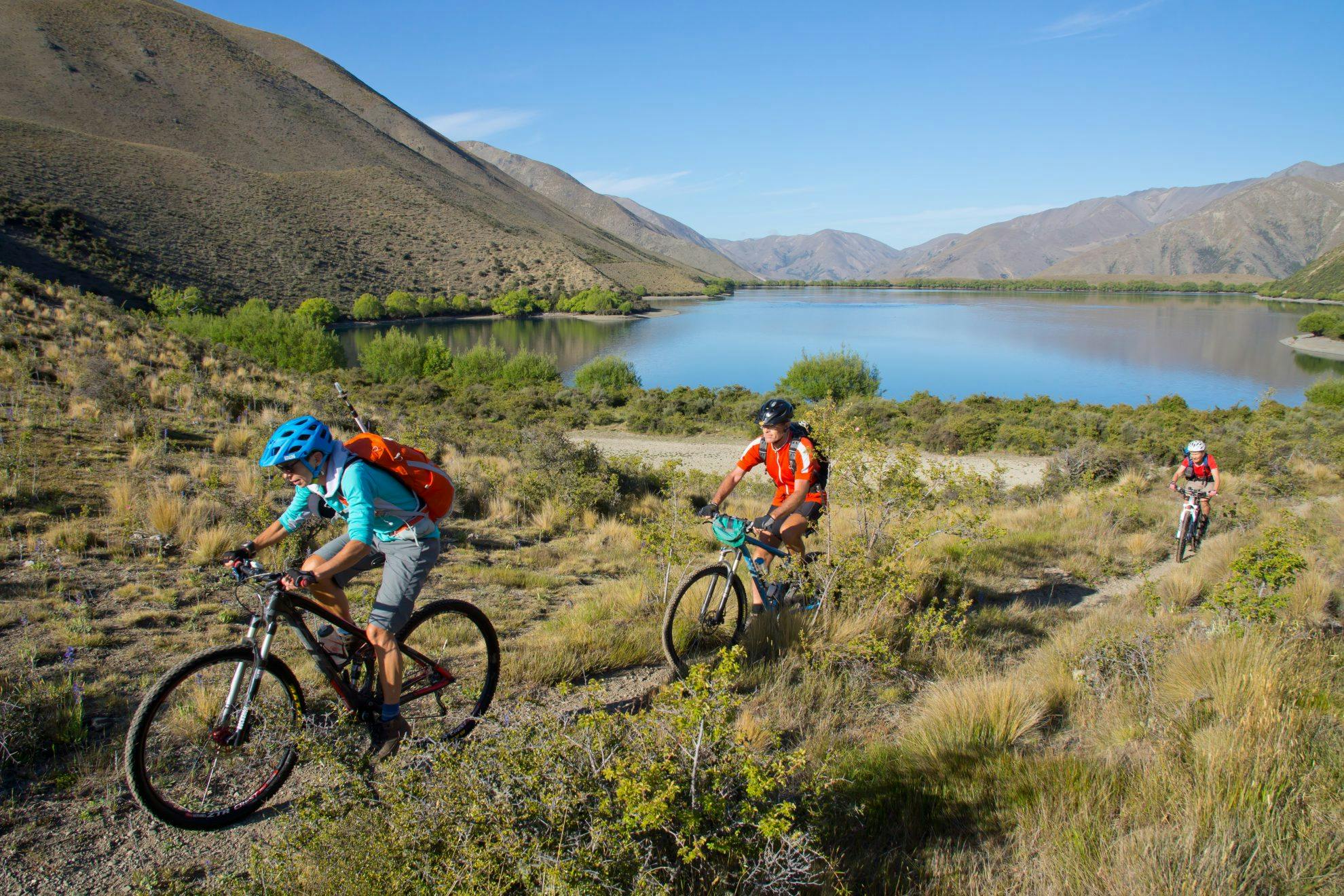
Christmas dawned clear as a bell and with presents in hand, we headed by bike and then foot to Mt St Bernard. It might be called Lake McRae Hut but it’s nowhere near the lake. We pedalled uphill for 1km to where, many moons ago, two massive landslides formed the beautiful Lake McRae. We continued around the lake’s northern edge on hard shingle where an impressive totara forest thrives. The lake is more than a kilometre long and half as wide. It’s electric blue waters looked deep and inviting.
At the east side of the lake, the dozer track continued to a low saddle before dropping to Elliot Stream. The trick to avoiding a section of bush-bashing is to not follow this track, but head north after the saddle and down the first ridge, then back onto the old track. The track down Elliot Stream to Elliot Biv is now pure cattle track, and the biv is quite hard to find without a map and GPS. But luckily Russ and Barb had legged it up to the Biv from the Clarence Reserve side last summer and knew where to look. The biv sits in a great spot amongst tall poplar trees at the edge of a grassy clearing. We stashed the bikes at the biv, pulled out our walking poles and headed straight up St Bernard’s Spur.
Snowgrass, tussock, spaniard and hebes reside on the lower slopes but they all but disappeared above the 1300m contour. Expansive views unfolded as we climbed. Barbara pointed out Manukau, Tapi, Alarm and Mitre. Dillon Cone hung in a heat haze south and the Seaward Kaikoura Range filled up our eastern view. After a hard slog and a second lunch at the Waterloo Plains, we decided to head back just short of Mt St Bernard, as time and Christmas tidings wait for no adventurer.
The Christmas decoration had been smuggled in and draped over the drying rack above the Pioneer stove. Balloons were inflated and stockings were hung from logs of wood. An uprooted wilding pine became a lovely Christmas tree. We gathered around the camp stoves and cooked up a feast. It was soon consumed by hungry mouths and followed by Christmas cake, chunks of dark chocolate, and mugs of hot chocolate. A fitting end to a Christmas day in the hills, in a hut, in the middle of nowhere.
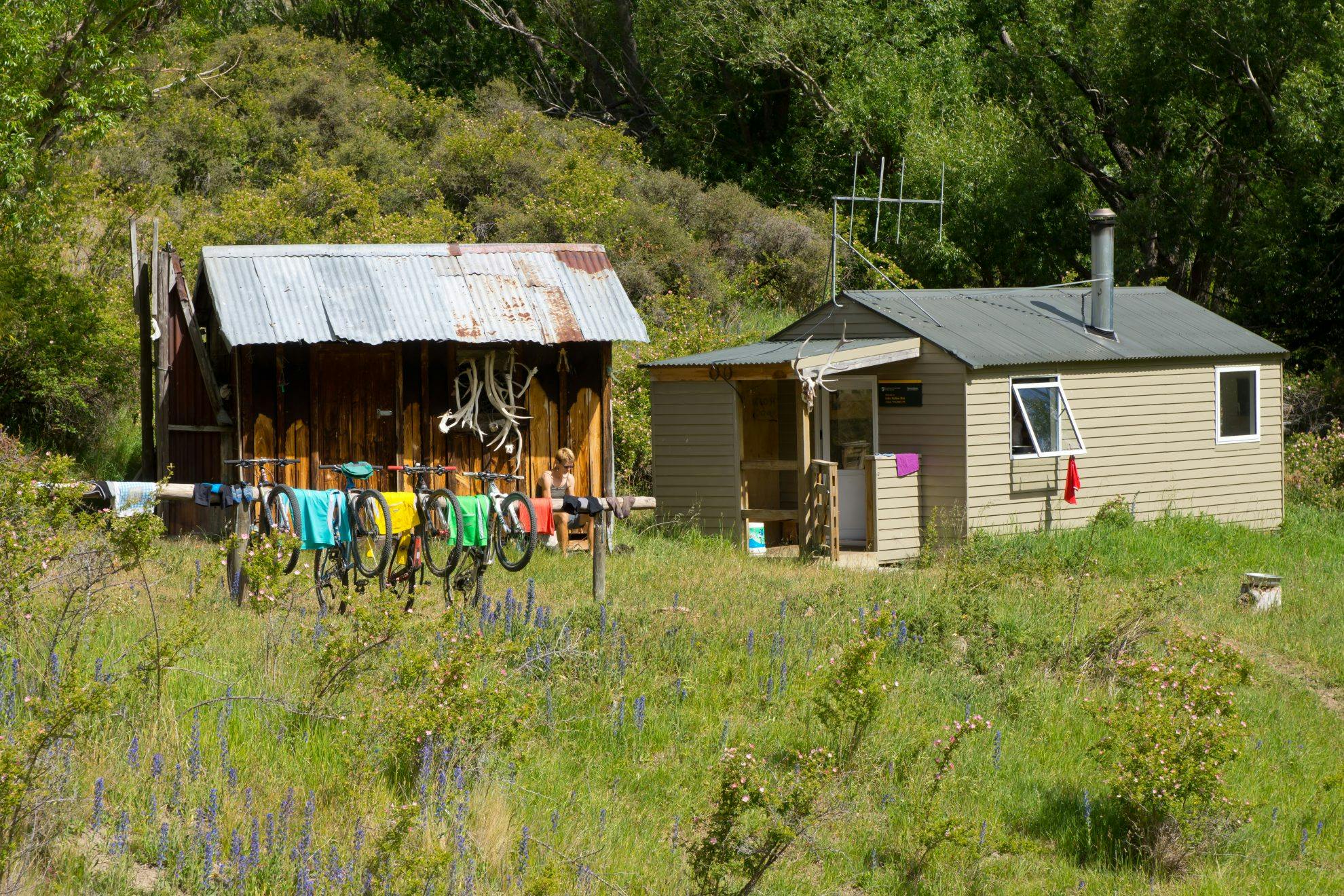
Boxing day was one out of the box, windless and warm. We set off early, hoping to avoid the hottest part of the day by climbing a steep ridge to the Barracks Range, north of the lake. The lower slopes and rocky gullies are home to gnarly totara, hebes, mountain flax and olerias but no beech. We spotted a lone wilding pine halfway up and made a mental note to grab the hut axe and deal with it the next day.
It was a final steep and rocky shoot that allowed us access onto the tops, with its cool breeze and stunning views into Goat Valley and across the tortured and twisted surrounding terrain.
We traversed along the tops to a pleasant lunch spot with a stunning aerial view of the whole of Lake McRae. Below us, a thousand Canadian geese busily formed complex patterns that would mean the world to clinical psychiatrists. They have become rabbits of the sky with their ability to turn pasture into poo. An adjacent shingle slide gave us a rapid descent to the lake and a shortcut back to the hut.
On yet another stunning day, Barb, Ditte and Russ headed up the Benledi Range for a full traverse and final climb to Mt Beattie. Meanwhile, I took the axe and went in search of the wilding pine we had spotted the previous day. It was rather large and seeding. After chopping it down, I traversed across the ridge towards the lake, pulled out about 50 seedlings and chopped out a couple of bigger trees closer to the lake. A full circumnavigation of the lake took up most of the afternoon, and I arrived back at the hut as the others returned with stories to tell and all worn out. They raved about the views into the Clarence and the excellent tops travel.
Our final day dawned hot, even before the sun had a chance to rise. We cleaned the hut, bid farewell and rode with balloons tied to our packs into a furnace, grateful of any breeze or splash of water that was on offer. A heated climb to Carters Saddle saw us gasping for cool air and in no mood for a long hot slog to Dillion Cone and back. It would have to wait for a cooler day. The rest of the way out was downhill as the mercury reached 32C in the shade. We hadn’t seen a soul for five days, just loads of cattle, goats, Canadian geese and a few rabbits but we’d had an amazing trip into a remote and seldom-visited part of New Zealand.





